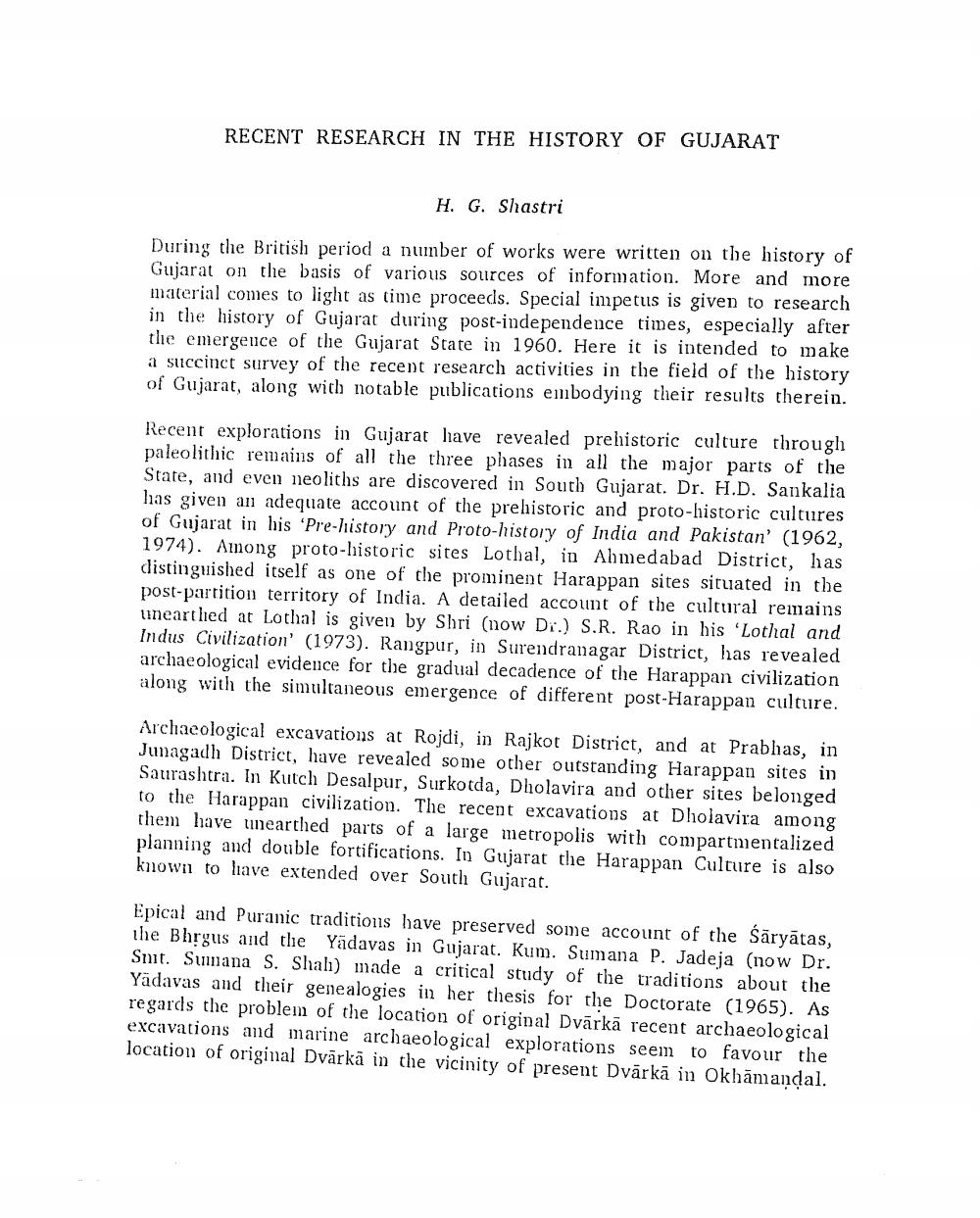________________
RECENT RESEARCH IN THE HISTORY OF GUJARAT
H. G. Shastri
During the British period a number of works were written on the history of Gujarat on the basis of various sources of information. More and more material comes to light as time proceeds. Special impetus is given to research in the history of Gujarat during post-independence times, especially after the emergence of the Gujarat State in 1960. Here it is intended to make a succinct survey of the recent research activities in the field of the history of Gujarat, along with notable publications embodying their results therein.
Recent explorations in Gujarat have revealed prehistoric culture through paleolithic remains of all the three phases in all the major parts of the State, and even neoliths are discovered in South Gujarat. Dr. H.D. Sankalia has given an adequate account of the prehistoric and proto-historic cultures of Gujarat in his 'Pre-history and Proto-history of India and Pakistan' (1962, 1974). Among proto-historic sites Lothal, in Ahmedabad District, has distinguished itself as one of the prominent Harappan sites situated in the post-partition territory of India. A detailed account of the cultural remains unearthed at Lothal is given by Shri (now Dr.) S.R. Rao in his 'Lothal and Indus Civilization' (1973). Rangpur, in Surendranagar District, has revealed archaeological evidence for the gradual decadence of the Harappan civilization along with the simultaneous emergence of different post-Harappan culture.
Archaeological excavations at Rojdi, in Rajkot District, and at Prabhas, in Junagadh District, have revealed some other outstanding Harappan sites in Saurashtra. In Kutch Desalpur, Surkotda, Dholavira and other sites belonged to the Harappan civilization. The recent excavations at Dholavira among them have unearthed parts of a large metropolis with compartmentalized planning and double fortifications. In Gujarat the Harappan Culture is also known to have extended over South Gujarat.
Epical and Puranic traditions have preserved some account of the $äryätas, the Bhrgus and the Yadavas in Gujarat. Kum. Sumana P. Jadeja (now Dr. Smit. Sumana S. Shah) made a critical study of the traditions about the Yadavas and their genealogies in her thesis for the Doctorate (1965). As regards the problem of the location of original Dvärkä recent archaeological excavations and marine archaeological explorations seem to favour the location of original Dvärkä in the vicinity of present Dvärkä in Okhamandal.




